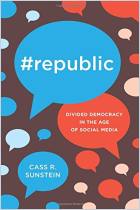
Recommendation
As a former game addict, C. Thi Nguyen says he can feel the same factors that make gaming so satisfying at work in social media discourse: levels, scores and simplified goals. This “gamification” shuts down the kind of deep, nuanced, amiable dialogues about an issue you might have with someone face-to-face, and instead promotes a dumbed-down version of moral outrage, including sound bites and viciousness. Nguyen’s engaging talk peels back the layers to expose the troubling mechanisms underlying modern public discourse.
Summary
About the Speaker
C. Thi Nguyen is an associate professor of philosophy at the University of Utah and the author of the book Games: Agency as Art.
Learners who read this summary also read
Book
Book
Article
Article

















Comment on this summary or Comenzar discusión